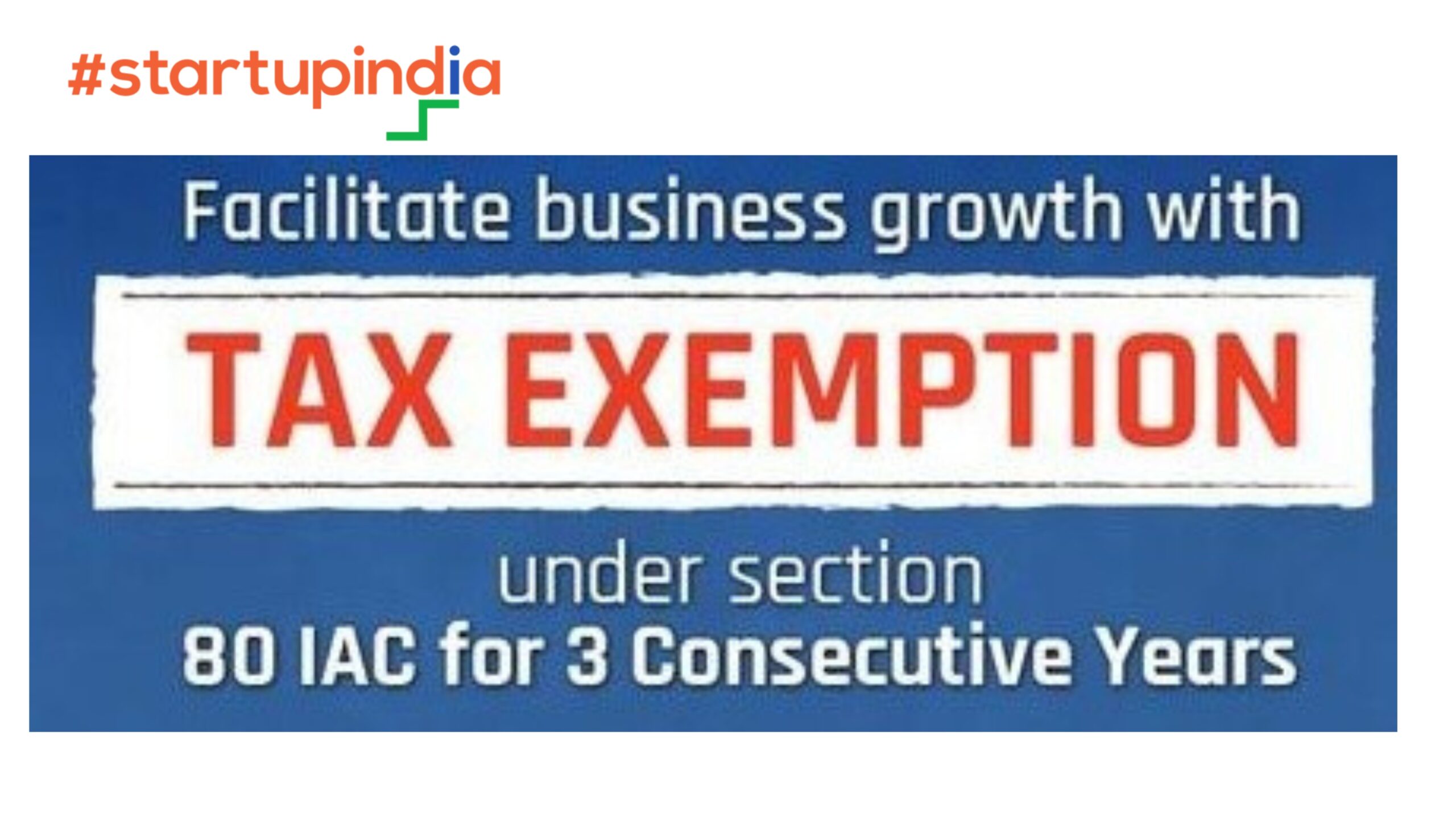Tax Exemption Under Section 80-IAC: A Complete Guide for Startups

Introduction Startups in India play a crucial role in driving innovation and economic growth. To support them, the Government of India has introduced various tax incentives, one of the most significant being Section 80-IAC of the Income Tax Act. This provision allows eligible startups to claim a 100% tax exemption on profits for three consecutive years. In this blog, we’ll explore the eligibility criteria, benefits, and the process to avail of this exemption.
What is Section 80-IAC?
Section 80-IAC of the Income Tax Act, 1961 provides a tax holiday to startups recognized under the Startup India Initiative. It allows eligible startups to deduct 100% of their profits for any three consecutive assessment years within the first ten years of incorporation.
Eligibility Criteria for Section 80-IAC
To claim tax exemption under Section 80-IAC, a startup must meet the following conditions:
- DPIIT Recognition: The startup must be recognized by the Department for Promotion of Industry and Internal Trade (DPIIT).
- Legal Structure: The entity should be registered as a Private Limited Company or a Limited Liability Partnership (LLP).
- Date of Incorporation: The startup must be incorporated on or after April 1, 2016.
- Turnover Limit: The annual turnover should not exceed ₹100 crore in any of the previous financial years.
- Innovation & Scalability: The startup must be engaged in innovation, development, improvement of products, processes, or services or have a scalable business model with high potential for employment or wealth creation.
- No Prior Splitting or Reconstruction: The business should not have been formed by splitting up or reconstructing an existing business.
Key Benefits of Section 80-IAC
✅ 100% Tax Exemption on Profits: Eligible startups can claim a complete tax deduction for three out of the first ten years of incorporation.
✅ More Cash Flow for Growth: Since no income tax is paid on profits, startups can reinvest the saved amount into business expansion.
✅ Encourages Innovation: By reducing financial burden, this incentive promotes entrepreneurship and innovation.
✅ Boosts Startup Ecosystem: This scheme aligns with the Startup India Initiative, providing startups with the required financial flexibility to scale.
How to Apply for Tax Exemption Under Section 80-IAC?
Eligible startups must follow these steps to avail of the Section 80-IAC exemption:
- DPIIT Recognition: Apply for recognition on the Startup India Portal (www.startupindia.gov.in).
- Application for Tax Exemption: After obtaining DPIIT recognition, file an application for tax exemption under Section 80-IAC through the Income Tax Department.
- Submission of Required Documents:
- Certificate of Incorporation
- Business Plan demonstrating innovation and scalability
- Financial statements & projections
- Income Tax Returns (if applicable)
- Approval from Inter-Ministerial Board (IMB): The application is reviewed, and upon approval, the startup receives an exemption certificate.
- Claim Exemption in ITR Filing: Once approved, the startup can claim the exemption in its Income Tax Return (ITR).
Common Mistakes to Avoid While Applying
❌ Not obtaining DPIIT recognition before applying for exemption.
❌ Incorrect or incomplete documentation, leading to rejection of the application.
❌ Applying after generating significant revenue, which may cause issues in approval.
❌ Failure to meet turnover or innovation criteria, making the startup ineligible.
Conclusion
The Section 80-IAC tax exemption is a significant financial advantage for startups in India, allowing them to save taxes and reinvest in growth. If your startup meets the eligibility criteria, applying for this benefit can provide a strong financial foundation for scaling operations.
Need help with DPIIT recognition, tax exemption application, or startup compliance? Fiscalrize is here to guide you through the process seamlessly! ?